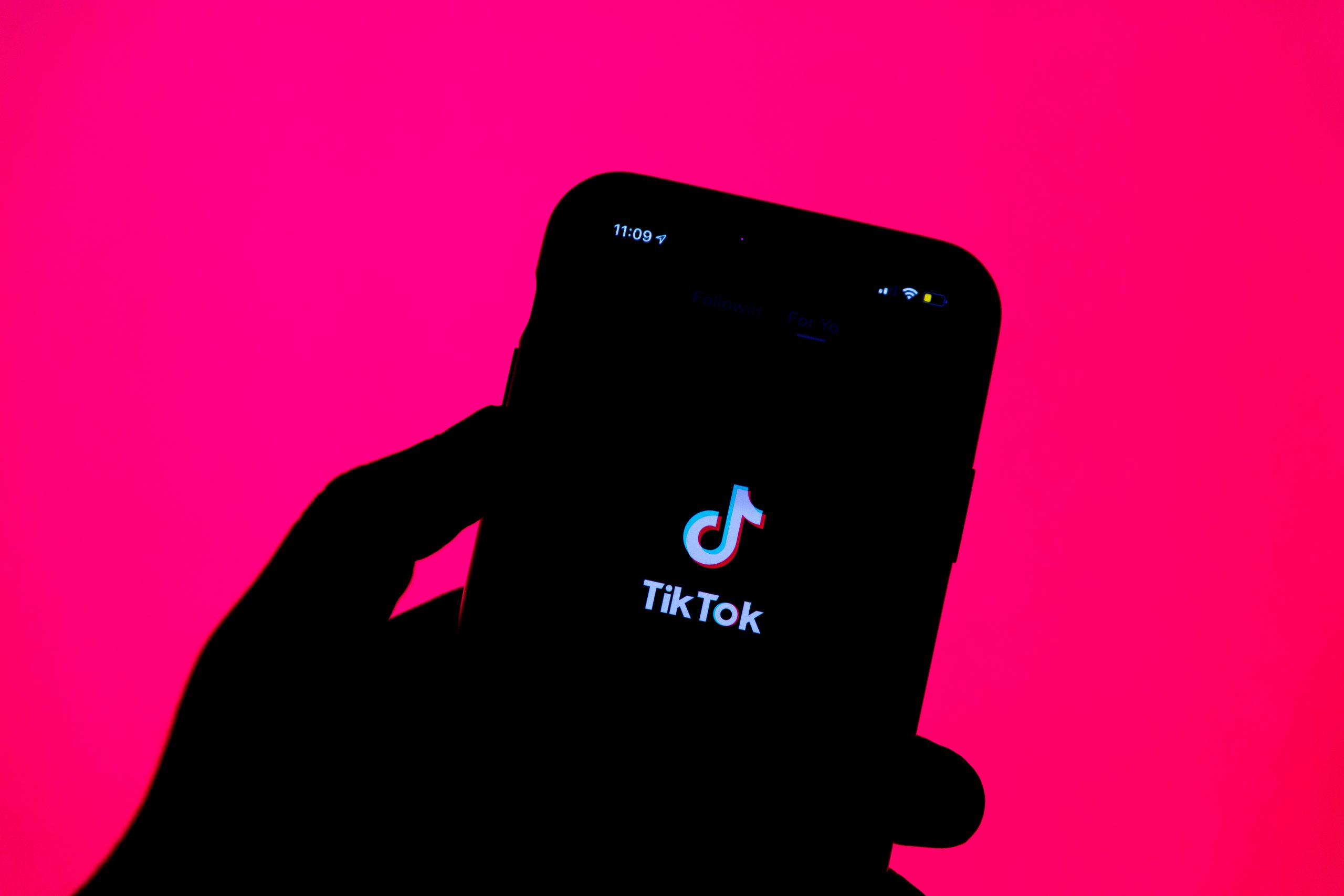
Speeding up songs is nothing new. Coined “Chipmunk Soul” by Questlove in the ‘00s, when artists on Jay-Z’s Roc-A-Fella label couldn’t help but add a sped-up soul sample to every song, upping the tempo has been a staple in dance and techno since long before.
Yet lately, TikTok seems to have extended the technique into new genres. With a string of viral sounds, sped-up versions of slow, sad tunes seem to be birthing an era of chipmunk indie.
Created by anonymous accounts dedicated to uploading tempo-lifted songs, these new versions are usurping the original. Released back in 2017, way before the birth of the app, Suki Waterhouse’s ‘Good Looking’ now has 70,600 uses on TikTok – which is nothing compared to 327,700 videos under the sped-up version that made it go viral.
Similarly, Laufey’s ‘Valentine’ has been used on 1,000 videos since its release in February, but in the last two weeks, a sped-up version uploaded by a random account has soundtracked 11,700 videos.

Questlove coined the term “Chipmunk Soul” in the noughties, to describe the sped-up sound coming from Jay-Z’s Roc-A-Fella label.
A pattern that stretches to a long list of artists from Demi Lovato to Michael Buble, it seems like TikTok has grown tired of blowing up new songs and now wants to reinvent old ones, as these tracks accounted for 14% of their May to June UK Hot 50 chart.
As an app built on speed and short attention spans, this might actually be the most understandable TikTok music trend yet. “Musically speaking, a sped-up song leaves little room to create a musical journey in the mind,” Timothy Peters, a music educator and producer explains.
By removing elongated pauses and compacting slow moments into a fast-paced string of words, speeding up a song erases all the moments that a listener would usually use to analyse the meaning of the song or their thoughts on it. Instead, sped-up versions value an overarching vibe, maintaining the general aesthetic of a track without the need to consider it too deeply – a perfect formula when users are simply looking for a sound to match their visuals.
There’s also something to be said for the high-pitch chipmunk voice. “Humans’ ears are designed to pick up the frequencies of the vocal formant [i.e. the quality of a speech sound] as that is where characteristics of the human voice are most prominent,” Timothy continues.
@bestspedup Could Out My Name – The Weeknd #spedup #bestspedup #speedsongs #spedupsongs ♬ original sound – bestspedup
“If a song is transformed around this axis, it may trigger a kind of subconscious awareness. This, along with the cultural connotations of cutesy-ness that comes with sped-up vocals do a lot of the heavy lifting regarding the visual content. A video of a dog is nice and all, but with a sped-up vocal, it is adorable.” And on an app built off the back of smiley American teens doing a little dance, TikTok’s obsession with the perceived happiness of a sped-up cutesy voice makes so much sense.
Transforming even slow, sad songs into something sweet, the trend for sped-up songs on TikTok has found a way to borrow all the catchiness and vibes that chipmunk soul loved while allowing users to maintain their alt-indie aesthetics. Allowing slow, lyric-heavy tracks like Faye Webster’s ‘Kingston’ to suddenly be a suitable soundtrack for a fast-paced 15-second video – sad girl indie will be TikTok-ified whether it wants to be or not. Accounts like @speed1sounds_ with their three million followers will see to that.
But while it’s easy to critique, hearing the outrage of gatekeepers that want their favourite lyrics to be appreciated at their original tempo, the trend seems to benefit the artists. “It introduced a lot of people to my music and despite the sped-up version being the one passed around, people have been listening to the recorded version,” Laufey told me about her track ‘Valentine’.
“I was scared that wouldn’t happen. My voice is my identity and I thought people wouldn’t find me because the sound was so distorted, but that didn’t seem to be an issue. I don’t feel any hate towards it. I think there’s something about the sped-up sounds that’s extra satisfying to the Gen-Z ear, but I don’t think it’s a bad thing at all – as long as people are willing to listen to the actual version as well.”
@speed1sounds_ #speedup #fyp #viral #edit #background #trend #sound #vibe #nightcore #nightvibe ♬ Originalton – ᥫ᭡
Only weeks after the sped-up sound blew up, Laufey is now topping the Spotify global jazz chart and tipped over a million monthly listeners, proving that people will still connect even in a different tempo.
But she does hit on a questionable element. As a jazz singer with a voice trained to perfection in her genre, Laufey’s voice at a normal tempo is very different to the pop voices that lead in music. In the same way that TikTok exacerbates speeding fast fashion and seems to have a whole generation at the whims of flashing month-long trends, there’s definitely something to be said for TikTok’s demand for conformity, uniformity and perfection, as users fall into cults all following the look, sound and vibe of their tribe.
When you consider this, the obsession with speeding up songs and, as a result, removing all tone and uniqueness from a voice, feels like just another way that the app values big, mainstream approval over actual rarefied talent. It seems to give the impression of originality despite removing all the quirks that make it so, all the agency, all the imperfections – exactly like the trend cycles that have teens jumping from one flavour of individuality to the next.
While allowing people to still flex their alt tastes using songs by niche artists that you can’t quite make up a viral dance to, the sped-up versions make them a step closer to the sanitised pop tunes that have always dominated the TikTok music sphere.
@laufey Replying to @idkrama ♬ Valentine – laufey
@ezzsounds Valentine – laufey #nightcore #speedaudio #spedupsongs #speedaudios #promo #foryou #viral #fyp #fypシ #xyzbca ♬ Valentine by laufey – Phoebe
Taking out the pacing and silence and even the focus on the lyricism that for so many artists is instrumental to their identity, the fact this trend predominantly affects slow, sad songs simply feels like a way to force a genre that demands a longer attention span and closer care to the neat, conforming TikTok.
“More artists and labels are leaning into the ‘catchy’ moments in remixed versions”, TikTok’s Music Content Manager Clive Rozario tells me, as labels discuss actively releasing their own sped-up versions. “Not only does this drive engagement with the original track and give it a boost up the charts, but in some cases, the remixes see even more engagement than the original. Labels are embracing this, responding to fan demand and actively promoting newer versions that take off.”
Certainly seeming like another way in which artists are left at the mercy of TikTok, with followers having control of what songs blow up and therefore what songs labels care to pay attention to – the suits are definitely hedging their bets on the up-tempo take-over.
But, for artists like Laufey, even after feeling the benefit, she’s happy to leave it up to the anonymous accounts: “For now I don’t see myself releasing any sped-up versions, but maybe that’ll be more normal in a year or two and I’ll look back at this and wonder why I was being so old-fashioned. Who knows?”




